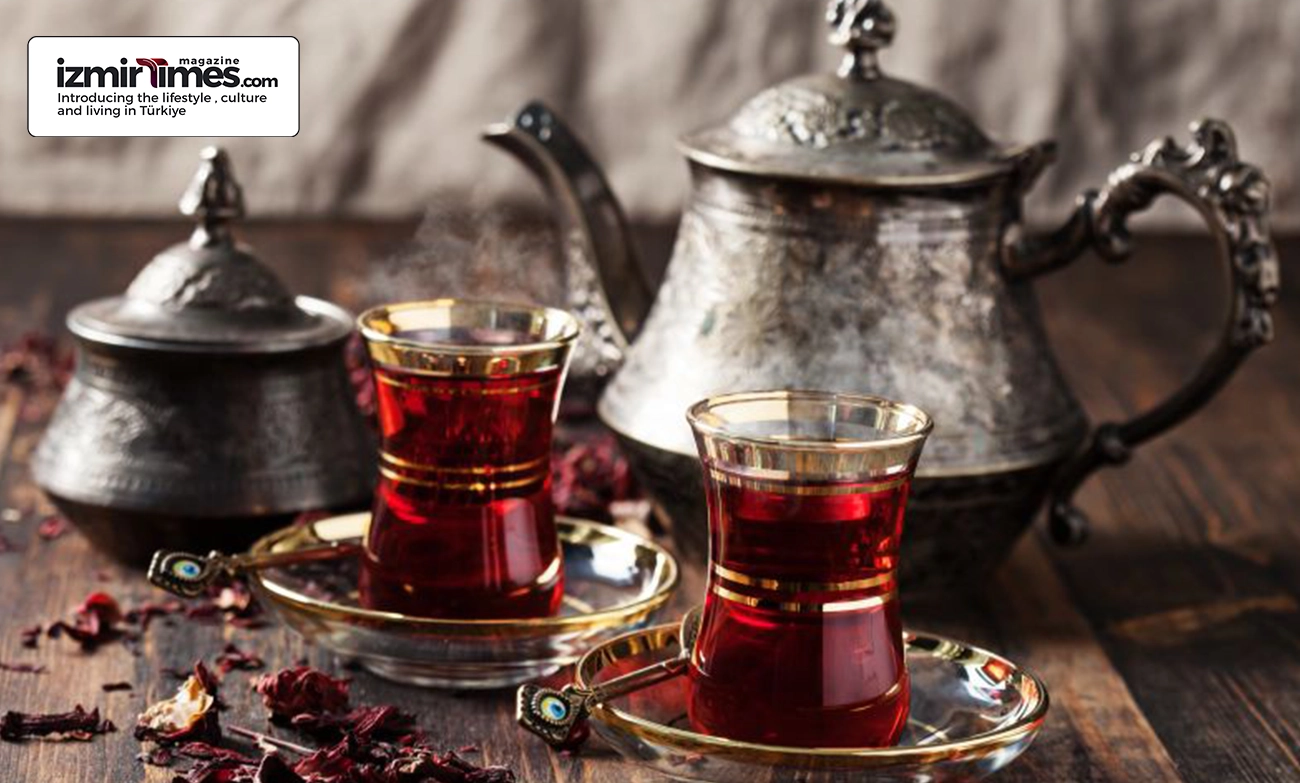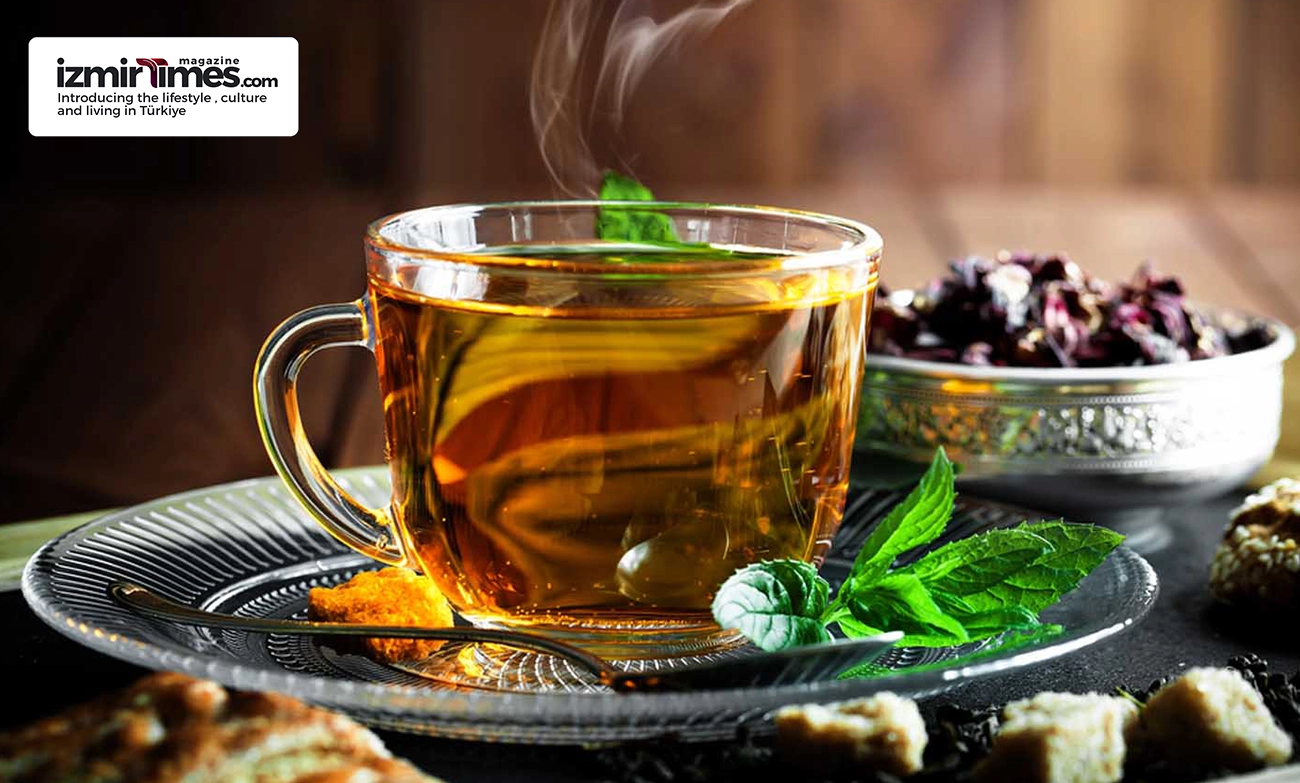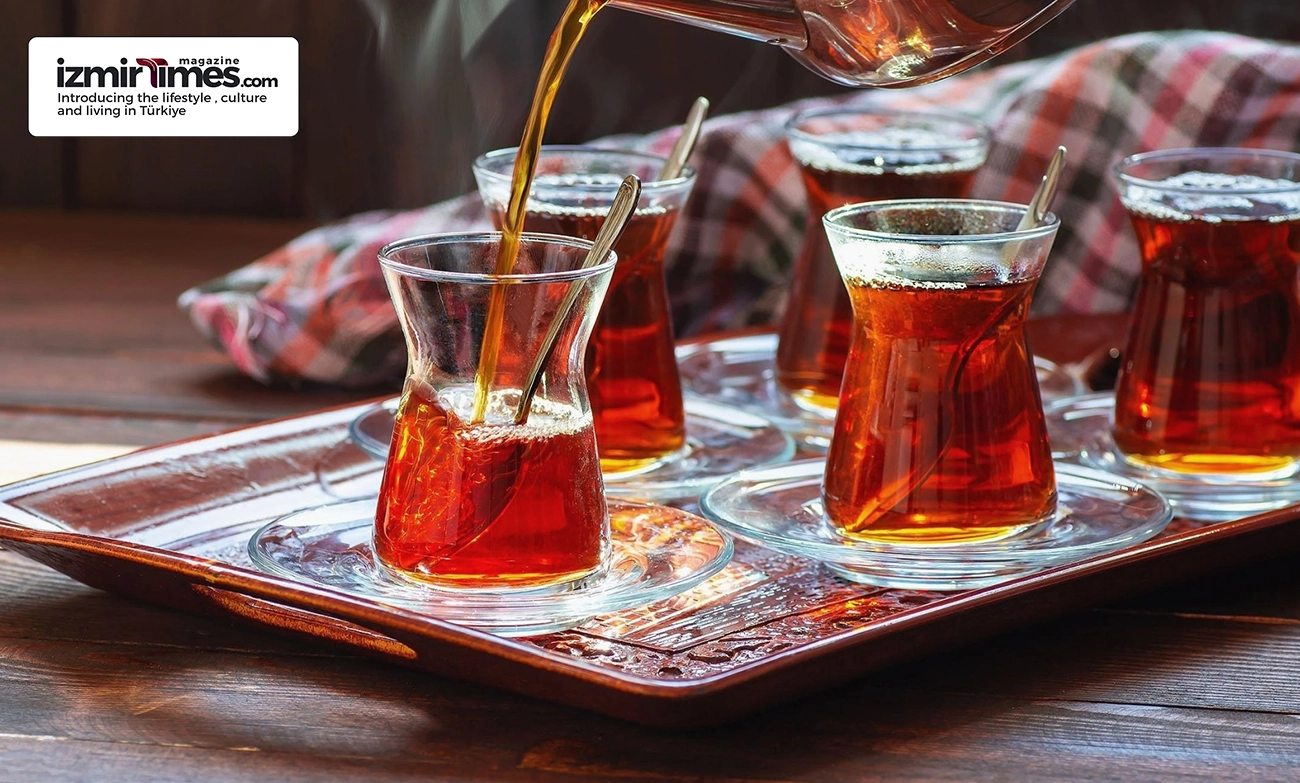
What is Turkish Tea
Turkish tea, or “çay” in Turkish, holds a special place in the hearts and homes of people across Turkey. It is more than just a beverage; it symbolizes hospitality, culture, and social connection. This article delves into Turkish tea’s history, production, brewing methods, and cultural significance, offering a comprehensive exploration of this beloved drink.

Turkish tea culture
The tradition of tea drinking in Turkey dates back centuries, tracing roots to the Silk Road trade routes that connected the East and West. Tea was introduced to Turkey in the early 20th century, primarily from China, and quickly gained popularity among the Ottoman elite. Today, Turkey is one of the largest consumers of tea in the world, with tea playing a central role in daily life and social gatherings.
Tea is a special place in Turkish culture, symbolizing hospitality, friendship, and warmth. It is offered to guests as a welcome gesture and served generously during social gatherings, meetings, and ceremonies. The tea-drinking ritual fosters connections and community, bringing people together to share stories, laughter, and companionship.
In Turkey, tea is not just a beverage but a way of life. Certain social etiquettes are associated with tea drinking, such as always accepting tea when offered as a sign of respect and politeness. Tea is often served in small tulip-shaped glasses called “final” and enjoyed with a cube or two of sugar. It is customary for the youngest person present to serve tea to the elders as a sign of deference.

Turkish Tea Leaf
Most Turkish tea is grown in the lush, mountainous regions along the Black Sea coast, particularly in the provinces of Rize and Artvin. These regions’ unique climate and fertile soil provide ideal conditions for tea cultivation. Turkish tea is made from the leaves of the Camellia sinensis plant, specifically the subspecies Camellia sinensis var. sinensis and Camellia sinensis var. assamica, which are carefully cultivated and harvested by skilled tea farmers.
Turkish tea leaves are the heart and soul of Turkey’s beloved beverage, çay. Cultivated in the lush tea gardens of Turkey’s northern regions, particularly in the provinces of Rize, Trabzon, and Artvin, these leaves boast a distinct flavor profile and aroma that have captivated tea enthusiasts worldwide.
The cultivation of Turkish tea leaves begins in the fertile soils of the Black Sea region, where the climate is ideal. The tea plants, known as Camellia sinensis, thrive in the region’s mild temperatures, abundant rainfall, and high humidity. Tea farmers carefully tend to the plants, pruning them regularly and ensuring they receive adequate sunlight and water.
Turkish tea leaves are typically harvested between May and October, during which time the tender young leaves are plucked by hand or with specialized machinery. These leaves undergo several processing stages, including withering, rolling, oxidation, and drying, to preserve their flavor, aroma, and color. The leaves are then sorted and graded based on size, shape, and quality.
Turkish tea leaves are prized for their bold, robust flavor and rich, earthy aroma. They yield a bottomless amber-colored brew with a smooth, velvety texture and a subtle hint of sweetness. The flavor profile of Turkish tea leaves can vary depending on factors such as the altitude, soil composition, weather conditions of the growing region, and the processing techniques used.
How to prepare Turkish tea
In Turkey, tea is traditionally brewed using a two-tiered teapot called a “çaydanlık.” The lower pot is filled with water and brought to a boil, while the upper pot holds loose tea leaves. Once the water reaches a rolling boil, a portion of it is poured over the tea leaves in the upper pot, allowing them to steep and infuse. The brewed tea is then diluted with hot water from the lower pot to achieve the desired strength and flavor.
How to make Turkish Tea (Step-by-Step Guide)
Turkish tea, known as çay, is an integral part of Turkish culture, enjoyed throughout the day in homes, cafes, and social gatherings. Brewing the perfect Turkish tea requires attention to detail and a few traditional techniques. Here’s a step-by-step guide to preparing Turkish tea:
Gather Your Supplies
– Turkish tea leaves: Use high-quality Turkish black tea leaves for the best flavor.
– Çaydanlık (Turkish teapot): This two-tiered pot consists of a more significant bottom kettle for boiling water and a smaller top pot for brewing the tea.
– Water: Fresh, cold water is essential for brewing Turkish tea.
– Turkish tea glasses: These small, tulip-shaped glasses are traditional vessels for serving Turkish tea.
Rinse the Tea Leaves
– Start by rinsing the tea leaves with cold water to remove dust or impurities. Place the tea leaves in the top pot of the çaydanlık and rinse them under cold running water for a few seconds.
Boil the Water
– Fill the bottom kettle of the çaydanlık with fresh, cold water. Place the çaydanlık on the stove and bring the water to a rolling boil over medium heat. The water should reach a vigorous boil to ensure flavor extraction from the tea leaves.
Brew the Tea
– Once the water comes to a boil, pour a small amount into the top pot of the çaydanlık, covering the tea leaves. Allow the tea leaves to steep for 1-2 minutes to release their flavor.
– After steeping, fill the top pot with more boiling water until it reaches the brim. Place the top pot securely on the bottom kettle of the çaydanlık to create a seal.
Simmer and Steep:
– Reduce the heat to low and allow the tea to simmer and steep for 10-15 minutes. This slow brewing process helps extract the tea leaves’ full flavor and aroma.
– Monitor the tea to prevent it from boiling over or burning. Adjust the heat as needed to maintain a gentle simmer.
Serve and Enjoy
– Once the tea is fully brewed, remove the çaydanlık from the heat. Pour the brewed tea into Turkish glasses, filling each glass only halfway to leave room for dilution.
– Turkish tea is traditionally served piping hot with a cube or two of sugar on the side. Sip slowly and savor the rich, robust flavor of this beloved beverage.

Optional: Dilution
– Some people prefer their Turkish tea diluted with hot water, especially if it’s too strong. You can dilute the tea to your desired strength by adding hot water to your glass.
Turkish Tea Time
Turkish tea is typically served in small, tulip-shaped glasses called “final,” placed in delicate saucers to catch any drips. The tea is poured with a flourish, creating a frothy layer of foam known as “köpük” on top. Sugar is commonly added to tea in Turkey, with each tailoring the sweetness to their preference. Tea drinking is a social affair in Turkey, with friends, family, and colleagues coming together to enjoy tea and conversation throughout the day.
In Turkey, tea isn’t just a beverage; it’s a cornerstone of social interaction and hospitality. Turkish tea time, known as “çay saati,” holds a special place in Turkish culture. It brings people together to unwind, converse, and enjoy the simple pleasure of sharing tea. Let’s delve into the rich tradition of Turkish teatime.
- Strict schedules don’t bind Turkish tea time; it’s a fluid concept that adapts to the rhythms of daily life. However, there are standard times when tea is typically enjoyed, such as mid-morning and mid-afternoon breaks.
- The preparation and serving of tea are steeped in ritual. Traditional çaydanlıks (double-stacked tea kettles) are used to brew and serve tea, and special tea glasses, often adorned with intricate designs, are employed for drinking.

Turkish Tea Cups
In Turkey, tea isn’t just a beverage; it’s a cultural institution, and the vessels used to serve it are an integral part of this tradition. Turkish tea cups, known as “çay bardağı” in Turkish, hold more than just tea; they embody centuries of heritage, craftsmanship, and hospitality. Let’s explore the significance of Turkish tea cups:
1. Traditional Design:
- Turkish tea cups feature a distinct tulip shape, with a narrow base that widens towards the top before tapering slightly inward. This design is aesthetically pleasing and functional, allowing the tea to retain its heat while offering an ergonomic grip for the drinker.
- The cup’s narrow waist helps trap the tea’s aroma, enhancing the drinking experience by intensifying its fragrance.
Cultural Significance of Turkish Tea
Tea is central to Turkish culture, symbolizing hospitality, friendship, and warmth. It is offered to guests as a welcome gesture and served generously during social gatherings, meetings, and ceremonies. The tea-drinking ritual fosters connections and community, bringing people together to share stories, laughter, and companionship.

Health Benefits of Turkish Tea
In addition to its cultural significance, Turkish tea offers a range of health benefits. It is rich in antioxidants, notably catechins and flavonoids, which help to boost the immune system, reduce inflammation, and promote overall well-being. Moderate tea consumption has also been linked to a lower risk of heart disease, stroke, and certain types of cancer, making it a healthy choice for those seeking to maintain a balanced lifestyle.
Turkish tea is more than just a beverage; it is a cherished tradition that embodies Turkish culture’s warmth, hospitality, and friendliness. From its historical origins to its brewing methods, serving etiquette, and cultural significance, tea holds a special place in the hearts and homes of people across Turkey. Whether enjoyed in a bustling tea house, a cozy home, or a scenic outdoor setting, Turkish tea symbolizes friendship, connection, and life’s simple pleasures.




